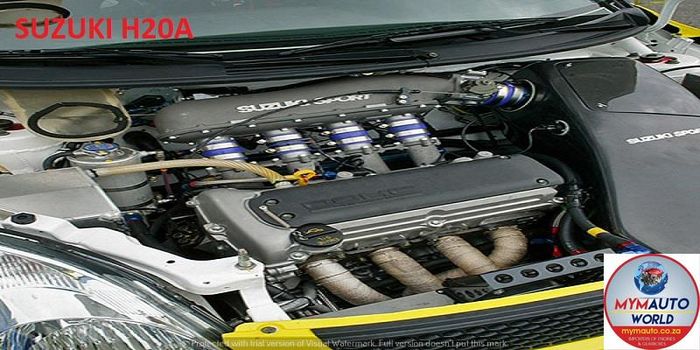Opel Corsa Engine: Common Issues and How to Deal with Them
Opel Corsa Engine: Common Issues and How to Deal with Them
Blog Article
Exploring the Inner Functions of a Compact Lorry's Engine System
As chauffeurs, we usually take for provided the detailed processes that occur within the boundaries of our vehicle's engine system. In this expedition of a compact car's engine system, we will certainly decipher the inner workings of this mechanical symphony, shedding light on the secrets that drive us ahead on our daily journeys.
Combustion Refine Overview
The burning procedure in a small vehicle's engine system is a vital system that successfully converts gas into energy to power the automobile. This process takes place within the combustion chamber of the engine, where fuel and air mix, spark, and produce controlled surges. The combustion procedure includes 4 main phases: consumption, compression, exhaust, and power.
During the intake phase, the piston moves downward, attracting in a mix of air and fuel right into the burning chamber. The next stage, compression, involves the piston moving upward, compressing the air-fuel mix to increase its potency. Consequently, in the power stage, the trigger plug stirs up the pressed combination, resulting in a rapid development of gases that compels the piston back down. This down movement generates the power needed to drive the automobile. In the exhaust phase, the burnt gases are gotten rid of from the combustion chamber via the exhaust valve, preparing the chamber for the following cycle. This cyclic burning process is fundamental to the operation of a portable vehicle's engine system, guaranteeing reliable power conversion for propulsion.
Piston and Cylinder Communication

The piston's specific fit within the cylinder is necessary for preserving optimal compression and protecting against energy loss during combustion. Limited clearances between the piston and cylinder wall surfaces make sure efficient securing, enabling the piston to move efficiently without permitting gases to leak past. Appropriate lubrication is likewise vital to lower friction and put on between these components, boosting long life and performance.
In addition, the layout and materials used in producing the piston and cyndrical tube influence engine efficiency and durability. Modern engines often employ lightweight yet durable products like light weight aluminum alloys for pistons and cyndrical tube linings to lower inertia and enhance thermal efficiency. Overall, the harmonious interaction in between the piston and cylinder is fundamental to the engine's performance and overall efficiency.
Gas Shot System Functionality
Fuel injection systems in compact vehicle engines play a crucial role in exactly delivering fuel to the burning chamber for reliable and regulated ignition. The gas shot system operates by injecting gas right into the burning chamber at the optimal moment during the engine's operation (opel corsa engine). This exact timing makes certain that the gas blends equally with the air for appropriate burning, causing enhanced gas efficiency and decreased discharges
There are mainly two kinds of fuel shot systems utilized in compact vehicle engines: port gas injection (PFI) and straight gas shot (DFI) PFI systems infuse gas into the intake port before the consumption valve, while DFI systems infuse fuel straight into the combustion chamber. Both systems have their advantages, with DFI offering better gas atomization and PFI providing an extra economical remedy.
Comprehending Engine Air Conditioning Mechanisms
Efficient procedure of a compact lorry's engine counts greatly on the effectiveness of its cooling mechanisms. The cooling system in a small automobile commonly consists of several elements working together to regulate the engine temperature level. Recognizing these engine air conditioning systems is important for maintaining the performance and long life of a compact vehicle's engine system.

Exhaust System Elements Explained
The optimal performance of a compact automobile's engine air conditioning systems depends on a complementary system recognized as the exhaust system, which makes up different essential elements for ensuring efficient exhausts and engine performance. The exhaust manifold gathers exhaust gases from the engine's cylinders and paths them to the catalytic converter.
One important component of Discover More Here the exhaust system is the oxygen sensing unit, which keeps an eye on the oxygen levels in the exhaust gases to assist manage fuel consumption and make certain optimum engine efficiency. why not try here opel corsa engine. Additionally, the resonator may exist in some exhaust systems to minimize sound degrees. On the whole, the exhaust system plays a vital role in maintaining engine performance, decreasing damaging emissions, and ensuring a quieter driving experience for compact automobile proprietors

Verdict
Finally, the small automobile's engine system is an intricate mix of components that interact to promote the combustion process, convert fuel right into energy, and get rid of waste gases. Recognizing the inner operations of the engine system, consisting of the piston and cyndrical tube communication, gas injection system, engine cooling devices, and exhaust system parts, is essential for preserving ideal performance and efficiency of the lorry.
The combustion procedure in a compact automobile's engine system is an important system that effectively converts gas into power to power the automobile.Gas shot systems in small car engines play an essential function in precisely supplying gas to the burning chamber for controlled and efficient ignition.There are largely 2 kinds of gas shot systems used in portable car engines: port gas injection (PFI) and straight fuel shot (DFI) Comprehending these engine cooling devices is important for keeping the performance and durability of a small automobile's engine system.
The like this optimal functioning of a compact vehicle's engine cooling devices depends on a complementary system understood as the exhaust system, which comprises different essential elements for making sure effective discharges and engine performance.
Report this page